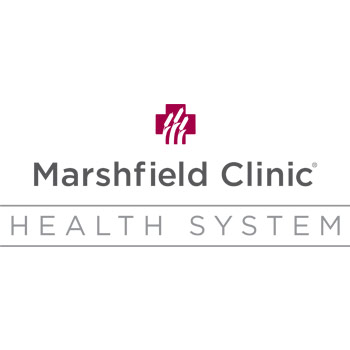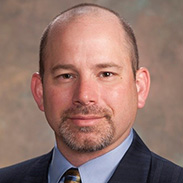

Marshfield Clinic Health System (MCHS) joined the ABMS Portfolio Program in 2013. In recent years, a growing number of its Portfolio Program quality improvement (QI) activities have aligned with its Quality Institute’s system-wide initiatives. Engaging MCHS clinicians in both enables them to “kill two birds with one stone,” said Erik J. Stratman, MD, the Medical Director of Continuing Medical Education (CME) and Continuing Certification. Physician assistants, nurse practitioners, pharmacists, and other care team members also actively participate in these initiatives.
With more than 50 MCHS locations across Wisconsin, Dr. Stratman’s team uses numerous strategies to engage providers in Portfolio Program initiatives. Among them are system-wide grand rounds and an intranet website. The system-wide grand rounds format provides presentations, instructions, and discussions from a televised lecture hall, creating a venue for specialists from across the system to attend live or virtually through archived sessions for on-demand viewing. The website describes the program and lists the approved projects, organized by specialty. As key deadlines approach, email blasts serve as a reminder that participating in Portfolio Program initiatives can help clinicians earn continuing certification QI-related credit. Most importantly, the administrator for the institutional MOC program meets with clinicians who request a one-on-one conversation to explore initiatives that are both relevant and able to be meaningfully completed in the time frame needed. To date, 276 physicians (40 percent of all MCHS physicians) across 13 specialties have participated in the Portfolio Program.
Physician participation in Portfolio Program initiatives can be somewhat organic. They may be triggered by a new department initiative, article, or health threat (i.e., Coronavirus Disease 2019, vaping, or opioids) or a highly engaged, quality-minded leader, Dr. Stratman said. Most QI projects involve improving clinical processes followed by those directly linked to clinical outcomes. (See sidebar below.) Then there are projects designed to enhance workflow process/process engineering and still other projects focus on patient experience.
Being a Portfolio Program sponsor has really bolstered the quality of MCHS’s CME program, he noted. “We have been awarded Accreditation with Commendation from the Accreditation Council for Continuing Medical Education, in part, because of our ability to connect quality outcomes in our patient population to our sponsored performance improvement continuing medical education (PI-CME) activities,” Dr. Stratman said. To date, more than 5,000 PI-CME credits have been claimed through the Portfolio Program. “If your CME leadership is not significantly involved in your Portfolio Program, I would strongly recommend you bring them to the table,” he added. Dr. Stratman routinely interacts with CME specialists and MOC education specialists to assist physicians in understanding the Portfolio Program, knowing options for participation, and submitting project proposals as part of the standardized review and approval process.
Typically, 50-plus QI projects are active simultaneously across the MCHS system. Currently, the system has 32 active individual projects and 41 active team-based or system-wide projects. Approved projects are reviewed every three years and can be renewed if they are still relevant or sunset, for example, if there is little participation, the quality strategy is no longer relevant or considered best care, or the measures need adjusting. QI project measures are collected every three or six months. “Most QI projects are never solved completely but represent more of a continuous strive to reach ever higher performance levels,” he noted.
Participation in MCHS initiatives, which are designed by QI experts, is mandatory, so these activities are very well supported with resources, Dr. Stratman said. MCHS has easy-to-access performance dashboards allowing clinicians to track how they are doing in a summative fashion over time and to identify which of their patients have not yet met the goal for an improvement-targeted measure. Clinicians can obtain a list of patients to review or contact, and access local and system-wide peer data on each initiative. “This [approach] can be very helpful to apply that well-intended peer pressure to influence individual improvement,” he added.
When a new QI initiative is launched, Dr. Stratman determines if it can be turned into a Portfolio Program activity available for MOC credit. “There are many moving trains of QI that we’ve jumped upon. There is no need to reinvent the wheel. Great QI work has always been going on. The key is to connect to it,” he said. In fact, nowadays, many of the key topic leaders in QI are writing the applications for Portfolio Program projects. “That’s what we want,” Dr. Stratman concluded. “It just took a while to align.”
In his role as Vice President of the American Board of Dermatology, Dr. Stratman recently published an editorial in Cutis discussing the board’s recent launch of its web-based longitudinal assessment using CertLink, an innovative technology platform that supports physicians’ ongoing professional development.
If you have a physician champion in your program that serves as a leader within the ABMS community and would like to share his/her work with fellow sponsors, just let us know.
MCHS’s Portfolio Program Project Improves Drug Prescribing Habits, Reduces Potential ADEs
The goal of the MCHS Drug Safety Alert Program (DSAP) project is to identify potentially dangerous medication prescribing habits that could be avoided or at least critically reviewed. To date, approximately one dozen drug prescribing initiatives are in place. Run by a multidisciplinary team of physicians, pharmacists, data warehouse engineers, and safety officers, the team identifies providers who may have an opportunity to improve prescribing behavior and provides them with a list of all patient interactions where this behavior was identified. Clinicians who choose to participate through the Portfolio Program review the data and take whatever necessary action, if any, to provide a safer prescribing outcome.
Follow-up review of prescribing data demonstrates that physician participation in DSAP led to changes in drug therapy and decreases in potential adverse drug events (ADEs). During the past six years, more than 14,500 potential ADEs were identified and 11,200 were resolved by changes in prescribing. The total number of patients impacted with safer medication prescribed through this MCHS Portfolio Program initiative was 11,200 (77% of 14,567 patients identified).
Lessons Learned at MCHS
Team effectively with the health system’s quality officers. All system-wide quality initiatives should have an accompanying Portfolio Program proposal initiated and approved. It’s a win-win-win-win for clinicians, the system’s quality initiatives, the system’s CME (education directly tied to outcomes), and the patients (as a result of better outcomes).
Be very clear early on about the kind of information clinicians will need to provide for interval reporting. Some physicians identify good, but very practice-specific improvement projects that lack a dashboard, system resources, or data warehouse to support it. Because these projects are so practice-specific, they may not be well-funded, but every clinician does have some ability to process data or clinical information.
Be proactive in reaching out to clinicians about participating in institutional continuing certification activities. No matter how many times you think you have explained how to participate or what continuing certification means, Dr. Stratman said, busy clinicians may remain confused.
Read more Portfolio Program Sponsor Spotlights
